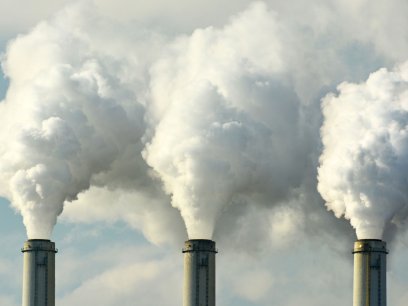
Did you know?
- Between 30 to 40% of food goes uneaten in the United States.
- Food waste is the largest component of US landfills at 24%—more than plastic (18%), paper (12%), metal (9%), and glass (5%).
- The top three groups of wasted foods are meat, poultry, and fish (41%), vegetables (17%), and dairy products (14%).
- When food ends up in landfills, it contributes to the third largest source (17%) of human-induced methane emissions in the United States. The comparative impact of methane on climate change is 25 times greater than carbon dioxide over a 100-year period.
Producing and transporting food from the farm to our tables requires the use of enormous amounts of energy, land, and water. Approximately 13% of US carbon emissions are associated with growing, manufacturing, transporting, and disposing of food. Additionally, the USDA and USGS estimate that at least 45% of the total land area in the US is used as cropland and grassland/rangeland and at least 37% of all water used in the US is for food production. When food is thrown away, these natural resources and others that are used for growing, processing, packaging, transporting, and marketing foods are also wasted.
How You Can Help:
Solutions to reducing food waste require cooperation among food producers, retailers, policy-makers, and consumers.
Important steps that individual consumers can take to reduce the amount of food they throw away include:
- Be a more careful shopper and only buy what you need
- Use better methods to store and reuse leftovers
- Serve smaller portions
- Compost your leftovers
The following resources will help you reduce food waste:
- The EPA created this Reducing Wasted Food at Home toolkit as part of their Food Recovery Challenge to illustrate actions that individuals can take to prevent and divert wasted food at home.
- For more information on how consumers can reduce their food waste, check out these tips for consumers from USDA’s Lets Talk Trash infographic.
- Get Your Money out of the Garbage provides tips to reduce food waste.
Sources:
- Buzby, J., Hyman, J. 2012. “Total and per capita value of food loss in the United States”. Food Policy. Volume 37, Issue 5. pgs 561-570. sciencedirect.com/science/article/pii/S0306919212000693.
- EPA. 2022. Resources, Waste and Climate Change. Accessed March 24, 2022. https://www.epa.gov/smm/resources-waste-and-climate-change#:~:text=EPA%…..
- EPA. 2022. United States 2030 Food Loss and Waste Reduction Goal. Accessed March 24, 2022. https://www.epa.gov/sustainable-management-food/united-states-2030-food….
- EPA. 2020. National Overview: Facts and Figures on Materials, Wastes and Recycling. Accessed March 24, 2022. https://www.epa.gov/facts-and-figures-about-materials-waste-and-recycli…
- EPA. 2018. National Overview: Facts and Figures on Materials, Wastes and Recycling. Accessed April 4, 2020. https://www.epa.gov/facts-and-figures-about-materials-waste-and-recycling/national-overview-facts-and-figures-materials#NationalPicture
- EPA. 2018. Overview of Greenhouse Gas Emisisons. Accessed April 4, 2020. https://www.epa.gov/ghgemissions/overview-greenhouse-gases
- EPA. 2014. Municipal Solid Waste Generation, Recycling, and Disposal in the United States: Facts and Figures for 2012. Accessed November 28, 2018. https://www.epa.gov/sites/production/files/2015-09/documents/2012_msw_f…
- EPA. 2015. The Food Recovery Hierarchy. Accessed November 28, 2018. http://www2.epa.gov/sustainable-management-food/food-recovery-hierarchy
- UNFAO. 2013. Tackling Climate Change through Livestock. Accessed November 28, 2018. www.fao.org/docrep/018/i3437e/i3437e.pdf.
- USDA. 2011. Major Uses of Land in the United States, 2007. Accessed November 28, 2018. https://www.ers.usda.gov/webdocs/publications/44625/11159_eib89_2_.pdf?….
- USDA. 2006. Economic Research Service. Irrigation Resources and Water Costs. Accessed November 28, 2018. webarchives.cdlib.org/sw15d8pg7m/http:/ers.usda.gov/publications/arei/eib16/eib16_2-1.pdf.


